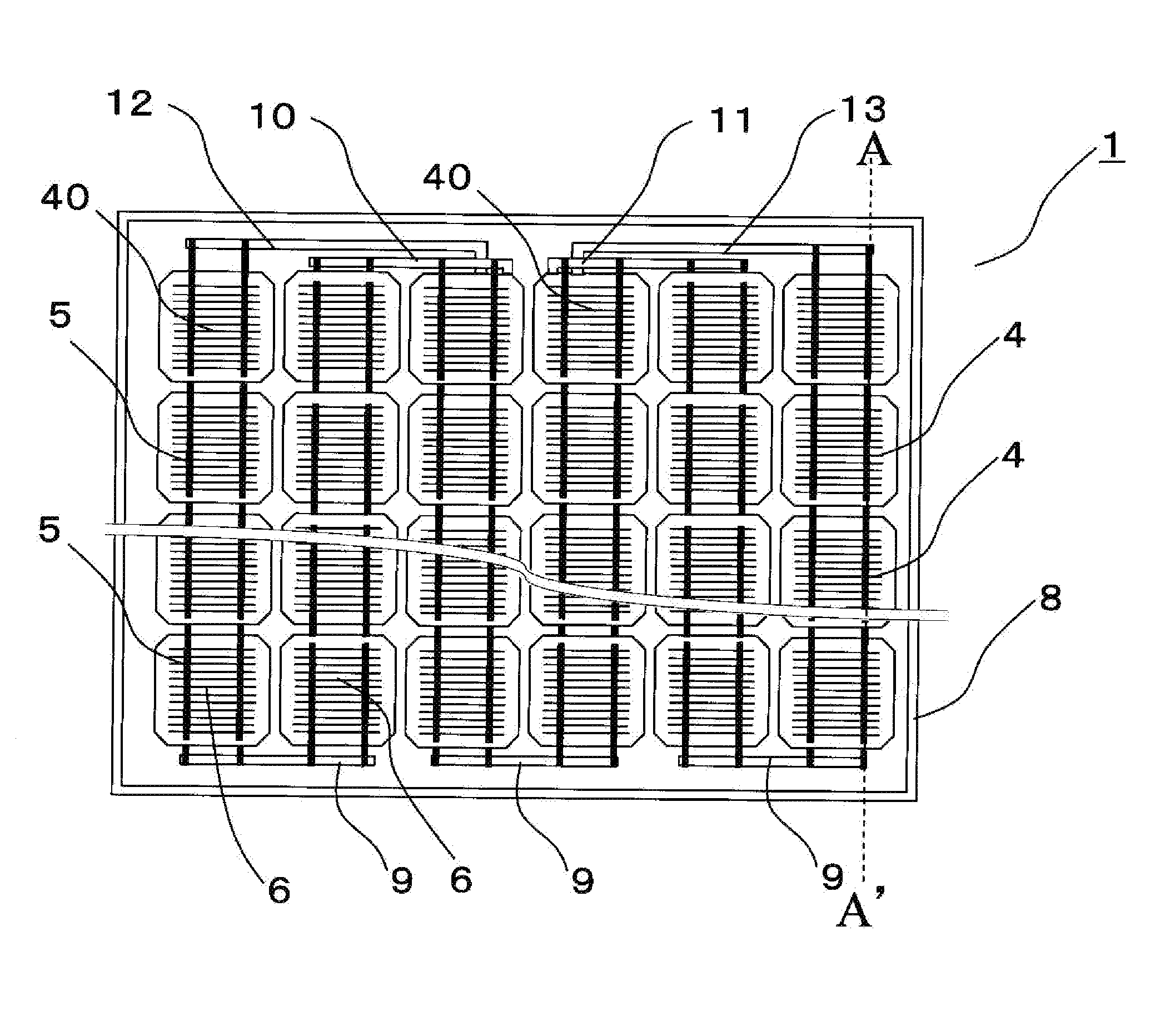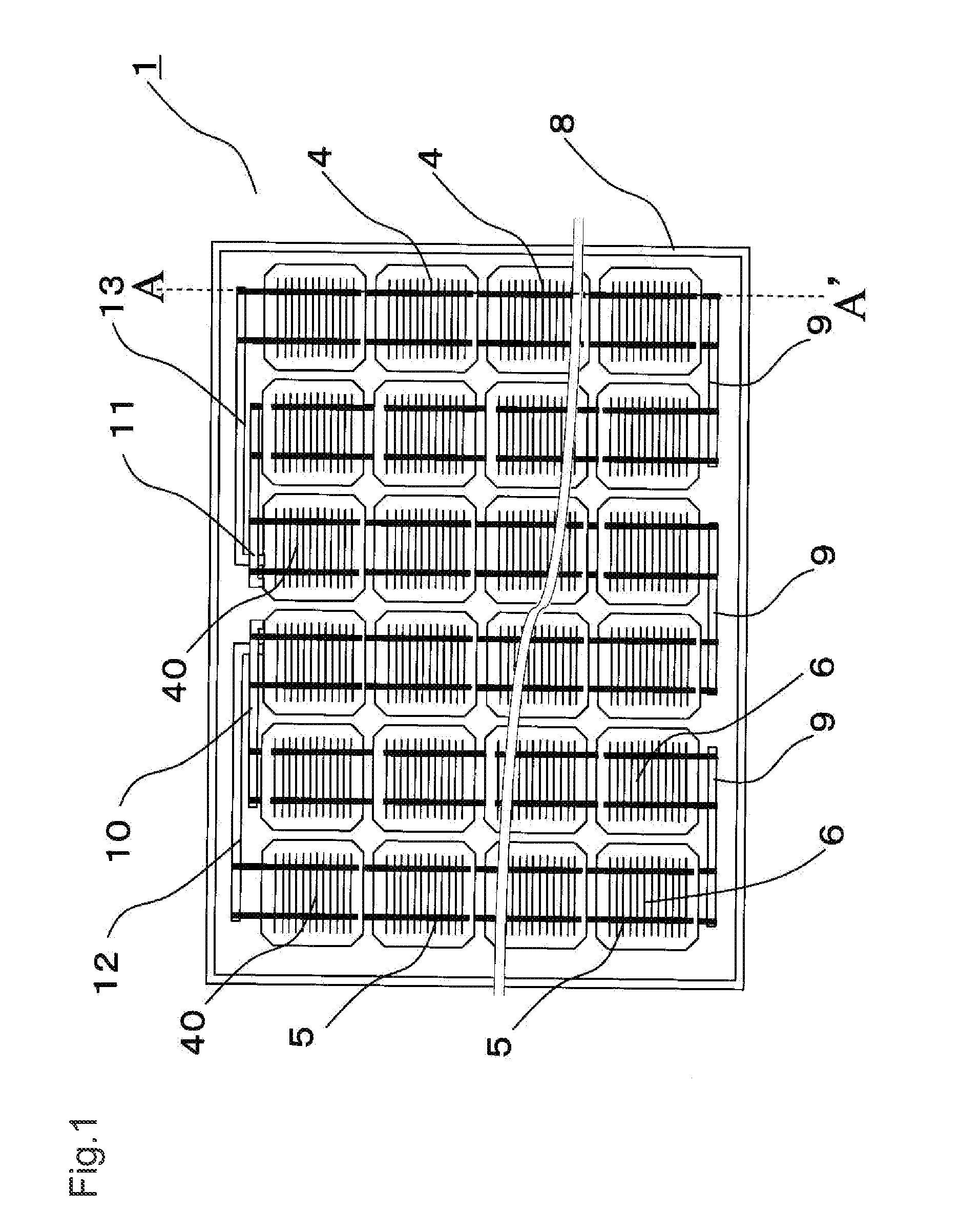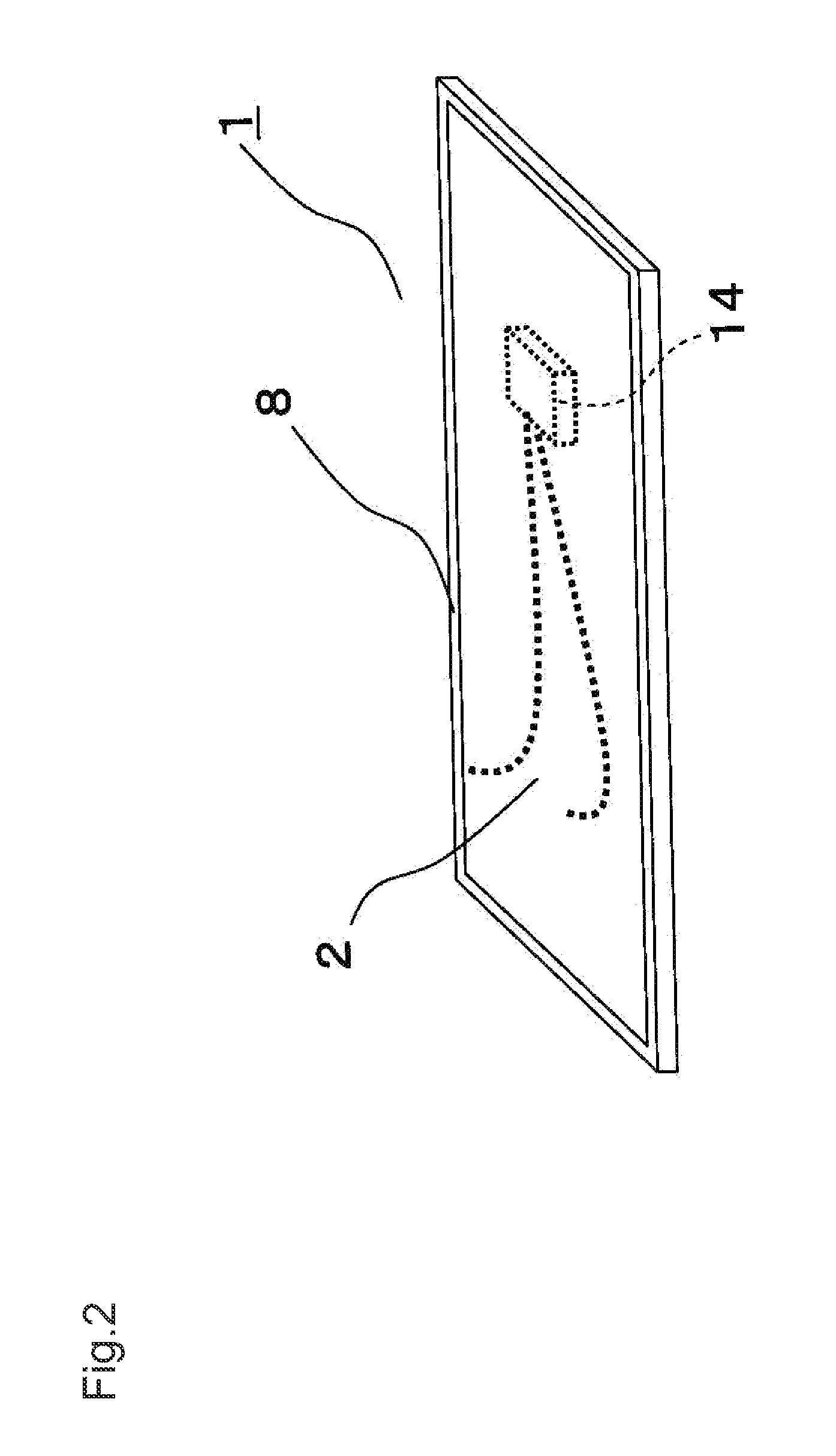Solar cell and solar cell module
- Summary
- Abstract
- Description
- Claims
- Application Information
AI Technical Summary
Benefits of technology
Problems solved by technology
Method used
Image
Examples
first embodiment
[0064]A solar cell module of a first embodiment of the invention will be described with reference to FIGS. 1 to 5.
[0065]FIG. 1 is a top view of the solar cell module of the first embodiment of the invention. FIG. 2 is a perspective view of the solar cell module of the first embodiment. FIG. 3 is a sectional view of a part of the solar cell module along line A-A′ in FIG. 1. FIG. 4A is a top view of a solar cell in the solar cell module of the first embodiment, FIG. 4B is a bottom view of the solar cell, and FIG. 4C is a sectional view of the solar cell along line B-B′ in FIGS. 4A and 4B. FIG. 5 is a sectional view of a part of the solar cell module of the first embodiment, for explaining the connection between the solar cell and conductive connection members.
[0066]In FIGS. 1 to 5, reference number 1 designates a solar cell module. Solar cell module 1 includes a rectangular plate-like structure and frame body 8 made of metal such as aluminum and configured to support the outer periphe...
second embodiment
[0097]A solar cell module of the second embodiment of the invention will be described with reference to FIGS. 6A, 6B, 6C and 7. FIG. 6A is a top view of a solar cell in the solar cell module, FIG. 6B is a bottom view of the solar cell, and FIG. 6C is a sectional view of a part of the solar cell with connection members connected thereto taken along line C-C′ in FIGS. 6A and 6B. FIG. 7 is a sectional view of a part of the solar cell module. Note that differences from the first embodiment are mainly described in the second embodiment.
[0098]The second embodiment is different from the first embodiment in that bus bar electrodes of rear surface electrode 19 are shorter than those of the first embodiment in the longitudinal direction and are formed in the vicinity of the edge of the rear surface of solar cell 4. The other configurations are the same as those of the first embodiment and are designated in FIGS. 6A to 7 by the same reference numerals as those of the first embodiment.
[0099]As ...
third embodiment
[0102]A solar cell module of the third embodiment of the invention will be described with reference to FIGS. 8A, 8B, 8C, and 9. FIG. 8A is a top view of a solar cell of the solar cell module, FIG. 8B is a bottom view of the solar cell, and FIG. 8C is a sectional view of a part of the solar cell along line D-D′ in FIGS. 8A and 8B. FIG. 9 is a sectional view of a part of the solar cell module of the third embodiment, for explaining the connection between the solar cell and conductive connection members. Note that differences from the first embodiment are mainly described in the third embodiment.
[0103]The third embodiment is different from the first embodiment in that front surface electrode 17 has no bus bar electrode (that is, the front surface electrode 17 has no bus bar structure). The other configurations in the third embodiment are the same as those of the first embodiment and are designated in FIGS. 8A to 9 by the same reference numerals.
[0104]With reference to FIGS. 8A to 9, fr...
PUM
| Property | Measurement | Unit |
|---|---|---|
| Temperature | aaaaa | aaaaa |
| Electrical conductor | aaaaa | aaaaa |
| Area | aaaaa | aaaaa |
Abstract
Description
Claims
Application Information
 Login to View More
Login to View More - R&D
- Intellectual Property
- Life Sciences
- Materials
- Tech Scout
- Unparalleled Data Quality
- Higher Quality Content
- 60% Fewer Hallucinations
Browse by: Latest US Patents, China's latest patents, Technical Efficacy Thesaurus, Application Domain, Technology Topic, Popular Technical Reports.
© 2025 PatSnap. All rights reserved.Legal|Privacy policy|Modern Slavery Act Transparency Statement|Sitemap|About US| Contact US: help@patsnap.com



